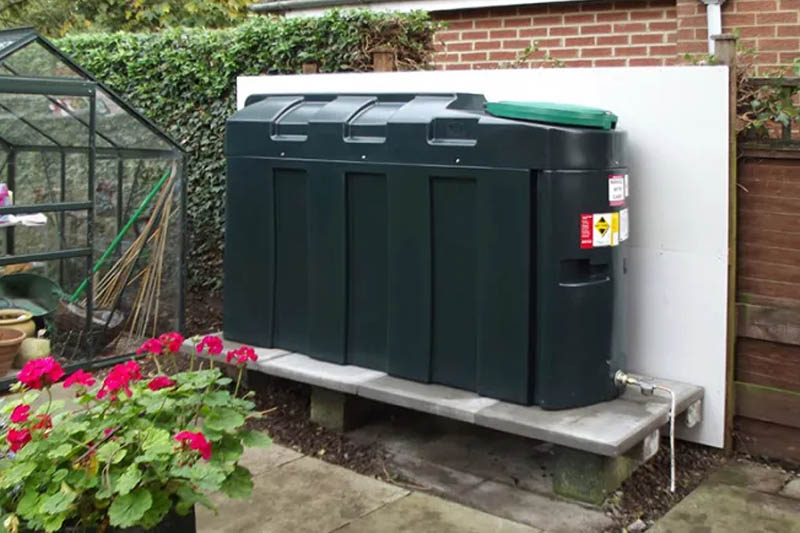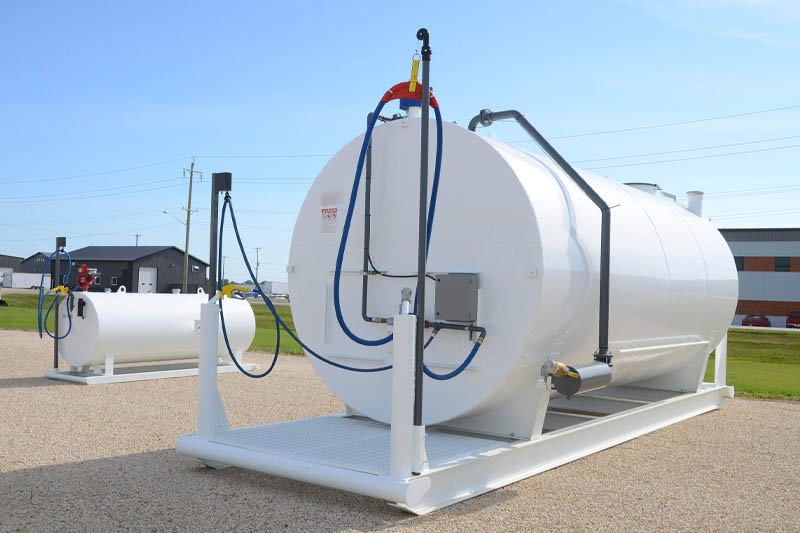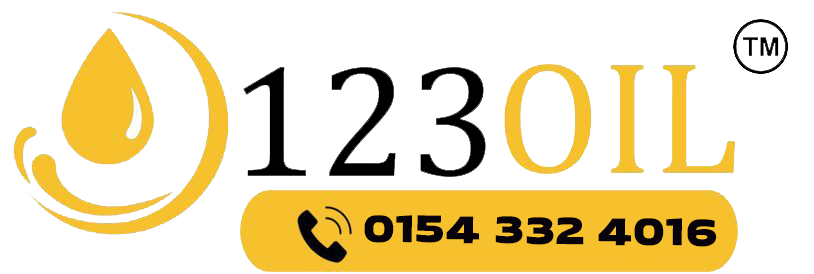Storing oil for domestic or commercial use can be very beneficial, but it also comes with a high responsibility factor. Hence, if you want to store oil on your property for domestic or commercial purposes or are interested in buying a property that already has a storage facility, you need to know a few things.
It is interesting to know that oil is responsible for 15% of pollution incidents yearly. Hence, there are certain sets of regulations that have to be followed strictly. However, these regulations may differ concerning the place and capacity to store oil.
Regulations for Domestic Storage:
If you have an above-ground fuel storage tank in your house with a capacity of less than 3500 litres, that provides oil for domestic purposes, the following regulations will apply to you in the UK:
Upto 30 Liters Storage:
You don’t need to notify your regional Petroleum Enforcement Authority (PEA) if you store up to 30 litres of oil in your house for your car, boat, or aeroplane. Depending on the volume, the rules specify multiple fuel containers:
- You can use a plastic jar for up to 10 litres.
- Up to 20 litres of fuel can be stored in a metal container
- up to 30 litres of fuel can be stored in a removable fuel tank
Between 30 and 275 Litres of Storage
If you need to store fuel over 30 litres but below 275 litres, you need to inform the local PEA. You have to submit your name and details of the storage facility there in writing.
Between 275 and 3,500 Litres
If you go above the storage capacity of 275 litres but less than 3500 litres, you will require a special certificate and a licence from PEA. The authority will issue you a non-transferable licence valid for up to 3 years.

What Types of Tanks can be Used?
When you store oil, you become responsible for taking safety measures to ensure that your storage does not pose any potential threat. Hence, Environmental protection regulations dictate the types and locations of the tanks to minimise the risk of a potential leak. Two types of tanks are available for storage.
- Single Skin Tanks
- Bunded Tanks
Regulations for Single Skin Tanks:
- Tank’s capacity must be less than 2500 litres.
- A tank can be used by a single dwelling.
- A single-skin tank cannot be installed within 10 meters of fresh or coastal water.
- A tank cannot be installed within 50 metres of any source of drinking water.
- Tank’s vent pipes must be visible when it is being re-filled.
- Single skin tanks cannot be installed in the areas where the regional regulations require bunding.
Regulations for Bunded Tanks:
- A bunded tank must have a capacity of 110% of the inner tank.
- The tank must be impermeable to water and oil.
- The material used to manufacture should be non-corrosive.
- If you are using polyethene tanks, they should meet the OFS T100 Firing Equipment Standard.
- If you are using steel tanks, they should meet the OFS T200 Firing Equipment Standard.
Regulations for Commercial Storage
If you are storing more than 200 litres of oil on your commercial property or more than 3500 litres of oil at your home, you have to follow the oil storage regulations for commercial use.
What Type of Oil can be Commercially Stored?
- Kerosene
- Diesel
- Petrol
- Biodegradable Oils
- Vegetable Oils
- Liquid Bitumen-based Products
- Synthetic Oils
- Biofuels
- Oils That Are Used as Solvents
- Waste Oil
What Types of Tanks Can Be Used?
Four types of storage tanks can be used for commercial storage:
- Oil Drums
- Intermediate Bulk Containers
- Fixed Oil Storage Tanks
- Some Generators with an oil storage capacity of more than 200 litres
- Mobile Bowsers
Where Should the Oil Tank be Stored?
You should store your fuel tank on floor level or below ground. Do not store your fuel tank above roof level. It is important to remember that your tank should be easily accessible for re-filling and maintenance purposes. It should be stored in an area where there is no risk of damage from any impact.
How to Maintain the Oil Tank’s Safety?
You should check your tank at least once every two weeks. This can help you detect any problem in its early stages. You should look for corrosion and deterioration along the pipework and the tank as well. If you see any abrupt change in fuel levels, it may be an indication of oil leakage somewhere in the system.
Every year before the heating season starts, you should run full maintenance on your system to make sure that you can use the facility safely throughout. Moreover, it is better to fill up the tank to 90% of its capacity and leave room for thermal expansion.
What to Look for Before Installing a Storage Tank
- It should be installed in a place where it is easy to fill and maintain.
- The tank must be sufficiently strong for the required purpose.
- There must be a secondary containment to ensure no leakage in case of failure.
- It should be a minimum of 10 metres away from coastal and fresh water.
- It should be a minimum of 50 metres away from any drinking water source.
- If you are using polyethene tanks, they should meet the OFS T100 Firing Equipment Standard.
- If you are using steel tanks, they should meet the OFS T200 Firing Equipment Standard.
What Kind of Oil Tank Fittings and Connections Can Be Used?
When you are storing oil at your commercial or domestic property, your priority should be safety. Any leakage from your system is not only expensive but dangerous too. There are many connections and fittings that can be used with an oil tank to maintain safety standards:
Secondary Containments
Secondary containment is helpful in the event of oil leakage from the tank. Usually, two types of secondary containments are used for a commercial storage facility.
Drip Trays:
Drip trays are used to capture spillage and drip beneath smaller containers (like drums). When using a drip tray as secondary containment for oil drums, you should know that the drip tray must have a capacity of 25% or more than that of the drums in its holding.
Secondary Bunds
A bund can be a brick masonry or concrete structure constructed around the storage tanks. A bund can be a construction composed of brick masonry where the oil container is kept. It can also be the outside shell of a tank manufactured as part of a tank system. However, a bund must satisfy the following regulations:
- A bund must have 110% of the capacity of the oil tank that it is holding.
- If a bund is holding more than one tank, it must have at least 110% of the capacity of the biggest tank or 25% of the capacity of all tanks combined.
- If you have an underground storage tank, the bund must have a 20 years life expectancy.
- Bunds must be manufactured with non-corrosive materials.
The Gauge:
A gauge is required to help you with re-filling your tank without spillages and overfills. It is situated in the secondary containments. It should be supported properly and fitted with a valve that shuts down automatically when not in use.
A dip rod can also be used as a gauge. However, it should be made from non-sparking materials.

Fuel Tank Fittings and Connections
Remote Filling
Remote filling means that you are filling your tank from somewhere outside your secondary containment. When doing this, you should use a drip tray to catch any spills and leaks.
Pipes:
For commercial use, pipes are generally manufactured from steel and then painted to minimise corrosion. But domestic pipes are usually made of plastic-coated copper, which makes them easier to bend.
If your pipework is underground, it can be difficult to locate the source in case of leakage. It is better to install your pipework above ground.
Pump
The pump must be located outside any secondary containment unit and away from the delivery routes, and it should be installed in the open air. It is better to keep it locked in a casing when not in use to avoid any damage.
Delivery Pipe
the delivery pipe must be stored in a secure location, and it should be attached to a drip tray. It is better if you keep your delivery pipe inside the secondary bund.
You must make sure that the valve at the input end is not open before using the pipe. It is better to fix an automatic cut-off system with the delivery pipe.
Devices to Prevent Overfill:
In case your fuel tank is fitted in such a way that it is not visible during the refill process. You can use the device to prevent overfill. This will either cut off the supply or send an alert using an alarm or a fixed probe inside the tank.
Couplings and Screws:
You should check that the fixed couplings and screws are free from erosion. Also, check them for any debris; it can be trapped inside and harm the system afterwards
Valves and Taps
Valves are a very important safety feature of an oil storage system. It can cut off the supply if there is any leakage or fire. It should be outside the building and visible from where the tank is being filled. It should be automatic and can be closed by remote sensors.
If the oil tank has taps, valves or vent pipes attached to it permanently, they must remain inside the secondary containment so that the oil does not pollute the surroundings in case of leakage.










